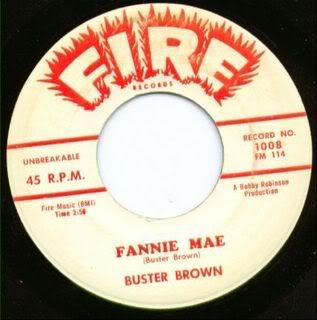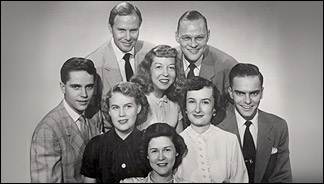
Greatest Hits by The Brothers Four was released in 1962 and it’s still available. Well, ok, many releases from 1962 (or any other such year) are still available. But there’s something different about a greatest hits collection. In most cases, particularly with artists whose careers kept going, old collections become obsolete, and they are superseded by newer, more complete, ones.
Some of these collections, though, take on a life of their own. One thinks of Ten Years Together by Peter, Paul & Mary, The Best Of The Kingston Trio, even Bobby Vee’s Golden Greats. I haven’t found a pattern; it may just be some kind of marketing intertia; it may be the popularity of certain albums that kept them in the second hand shops long into the CD era, it may be, at least in some cases, lack of a reasonable alternative, it may all of the above.
So it is with The Brothers Four. The Greatest Hits album. Released in 1962, it misses Hootenanny Saturday Night, a hit of sorts in 1963, and Try To Remember, from 1965. But it persists.
Besides the two that aren’t on the album, one of which I procured from a K-Tel style album of folk hits, the group had 5 top 100 singles, all in the first 3 years of the decade. Their style took its cue very much from The Kingston Trio, with an emphasis on making themselves sound as pretty as possible, and I think it’s difficult to be emotionally sincere in four-part harmony. That they don’t always succeed should not detract from the admirability of the effort.
The Brothers Four:
• Greenfields – The juxtaposition of romance and environmental consciousness. The starkness of the arrangement and the mournful tone exceed even the saddest heartbreak. Prozac anyone? Their moment in the sun, this song reached number 2 in the spring of 1960.
• Yellow Bird – The Mills Brothers hit from 1959.
• Frogg No. 1 – This is a children’s song, which the groups attempts to salvage with “funny” asides. “You ain’t a frog, you’re a horny toad,” sings Molly Mouse. Indeed. From the spring of 1961.
• I Am A Roving Gambler – Typical blues / folk fare. The harmony on “cards” is heartrending.
• Theme From “La Fayette” – It’s anyone’s guess what “La Fayette” is. The song is a kind of lullaby.
• Too Many Miles – A song about distance, and coping with separation.
• Blue Water Line – A rallying song about preservation of historically significant property. Given the newspaper articles that continue to appear on similar subjects, even now, the song remains timely, if not particularly engaging.
• Dark Tomorrow – This song about the hard life has a bit of a spiritual sound to it.
• Green Leaves Of Summer – There are better versions of this song of the transience of youth. From the winter (figures) of 1960 / 61.
• Eddystone Light – A bizarre tale of a lighthouse keeper who married a mermaid, told by the son, one of whose brothers got eaten…
• My Tani – Song to an island girl. Which island? Not Montreal. From the summer of 1960.
• Nine Pound Hammer – This Merle Travis song closes the collection, and picks up where Tennessee Ernie Ford left off. Check out John Prine on Common Sense.
• Try To Remember – Just as they were becoming obsolete (though they are still around) the brothers snuck one last song into the top 100. Their take on this 60s perennial is surprisingly moving. My favourite, though, is Belafonte. From the fall of 1965.
 I like the idea that Buster Brown’s real name was Buster Brown. Whoever wrote the Wikipedia article speculated that it was so. People seem to be able to find these things out; I wonder why the information for Mr. Brown is not available.
I like the idea that Buster Brown’s real name was Buster Brown. Whoever wrote the Wikipedia article speculated that it was so. People seem to be able to find these things out; I wonder why the information for Mr. Brown is not available. The first LP I ever got was The Beatles’ Second Album. One of the tracks was Money (That’s What I Want). I was 7 years old, and I thought that was pretty wild, nestled among all those love songs was a song of what seemed to unmitigated greed, a plain-spoken paean to materialism-on-steroids.
The first LP I ever got was The Beatles’ Second Album. One of the tracks was Money (That’s What I Want). I was 7 years old, and I thought that was pretty wild, nestled among all those love songs was a song of what seemed to unmitigated greed, a plain-spoken paean to materialism-on-steroids.

 I happen to own every top 40 recording that Dorsey Burnette did, which is one song, and there are two others that made the hot 100 but not the top 40, and I don’t have those.
I happen to own every top 40 recording that Dorsey Burnette did, which is one song, and there are two others that made the hot 100 but not the top 40, and I don’t have those. How can anyone remember a guy with a name like Jimmy Jones? Maybe that’s why his chart career only lasted about a year, and only 2 of his 4 top 10 records reached higher than number 83, (top 10).
How can anyone remember a guy with a name like Jimmy Jones? Maybe that’s why his chart career only lasted about a year, and only 2 of his 4 top 10 records reached higher than number 83, (top 10). The Dinning Sisters were a recording group who had some hits in the 40s, and they had a brother named Mark, who had 4 top 100 records in the very early 60s, one of which reached number 1 and 3 of which never made it past the top 60. I got his one big hit from the American Graffiti soundtrack, where it sits safely ensconced between Chantilly Lace and Crying In The Chapel.
The Dinning Sisters were a recording group who had some hits in the 40s, and they had a brother named Mark, who had 4 top 100 records in the very early 60s, one of which reached number 1 and 3 of which never made it past the top 60. I got his one big hit from the American Graffiti soundtrack, where it sits safely ensconced between Chantilly Lace and Crying In The Chapel. I no longer have a membership at the CSL Library, and I no longer own a 2003 Montana (or any Montana, or any vehicle). But last winter I had both those things, and I used my library card to borrow The Essential Miles Davis, a 2 CD set featuring highlights of the career of jazz legend Miles Davis.
I no longer have a membership at the CSL Library, and I no longer own a 2003 Montana (or any Montana, or any vehicle). But last winter I had both those things, and I used my library card to borrow The Essential Miles Davis, a 2 CD set featuring highlights of the career of jazz legend Miles Davis.


